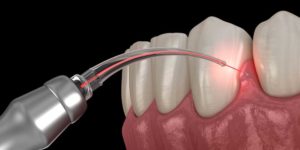A gingivectomy is a surgical procedure commonly used to extract infected or damaged gum tissue. The technique is generally used to treat disorders such as gingivitis, but it is also used to extract excess gum tissue for cosmetic reasons such as fixing a gummy smile. Read on to see how the procedure is performed and what to do during the recovery process if you are unfamiliar with the treatment.
What to expect
In general, it usually takes between 30 and 60 minutes to complete a gingivectomy based on how much gum tissue the dentist works on and extracts. Small operations may be done in one session, but full removal and reshaping of the gum can take up to several sessions to finish, depending on whether the dentist splits the operation into stages.
How it works
- Your dentist will treat the site of surgery with a numbing anesthetic.
- The dentist then uses a scalpel or a laser to make a small incision to cut pieces of your gum tissue.
- After removal of the gum tissue, the dentist will use a laser to vaporize infected areas and reshape the gum line.
- Your gums will be covered as they regenerate by a putty-like paste and bandages inside your mouth.
The healing process
The healing process is very quick for most gingivectomy operations and you should be able to go home soon after the initial treatment. It’s normal for the next few days to experience some bleeding and you may have a little pain in your jaw area.
Make sure to replace the bandages and take pain medications like Tylenol or Advil to subdue your discomfort. During your healing, you should use warm salt water or a saline solution to keep your mouth clean of bacteria. If the discomfort lasts longer than a week or two, please contact the dentist and make any necessary changes.
Learn more
To learn more about gingivectomy procedures contact our offices in Fairfax, Virginia to schedule an appointment with Dr. Withers.






